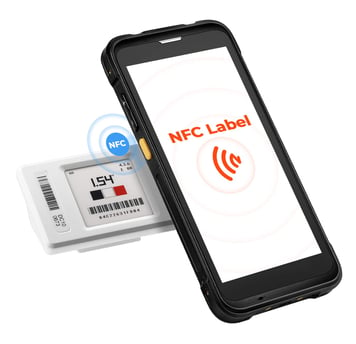sainsbury's electronic shelf labels in latest tech test
price tags that replace traditional paper labels with e‑ink or LCD displays that are centrally updated in real time
6/8/20252 min read


Sainsbury’s has begun trialling electronic shelf labels (ESLs)—digitized price tags that replace traditional paper labels with e‑ink or LCD displays that are centrally updated in real time. Here’s a comprehensive overview:
What’s happening at Sainsbury’s
Current trials are active in a few larger branches, notably including Witney (Oxfordshire), Shoreditch Old Street, Rugby, Kirkcaldy, and Shrewsbury—covering departments like alcohol, general merchandise, and chilled foods
Technology partner: The rollout is being developed in partnership with Harrison Retail (for hardware integration) and powered by episodic systems like Episys’s "Retail Enterprise Suite" to unify signage and enable faster centralized control
Display tech: The ESLs use e‑ink displays—ideal for low power requirements—and are designed to work in refrigerated or frozen sections. They support color accents (e.g., highlights for discounts) and include secure wireless updates
Benefits & goals
1. Labor savings: Automating price updates significantly cuts staff time spent replacing paper labels and posting promotions
2. Consistency & speed: Updating pricing across the chain is nearly instantaneous—taking less than a day vs. up to three with traditional methods
3. Sustainability: Reduces paper usage and waste, aligning with eco-friendly initiatives
⚠️ Challenges & shopper concerns
Mixed shopper sentiment: Some customers worry these digital tags could obscure discount labels like the familiar yellow or orange stickers, or maybe enable dynamic (“surge”) pricing
Technical costs and complexity: Earlier experiments by supermarkets like Tesco indicated ESL systems can be as expensive as manually relabelling, though costs have likely decreased since
Reliability: E-ink screens, batteries, network connectivity, and cold-temperature resilience require robust infrastructure and maintenance—a challenge noted in trials and broader rollouts
🌍 Industry context
Market trend: ESLs are gaining traction across UK grocers:
Lidl and Aldi have mostly rolled out ESLs fleetwide
Co‑op plans full implementation by 2026, Asda and Morrisons are testing in select outlets, and Tesco has conducted limited trials
Retail automation movement: ESLs are part of broader tech adoption including self-checkouts, inventory robots, and AI tools
🤔 What’s next for Sainsbury’s
Expanded pilot: Following feedback from the current test stores, Sainsbury’s may roll out ESLs more broadly—potentially even nationwide.
Central integration: Integration with the Retail Enterprise Suite allows ESL data to sync with promotions, kiosk signage, and online pricing—ensuring unified messaging ([progressivegrocer.com][2]).
Ongoing evaluation: Customer acceptance, reliability, cost-effectiveness, and operational impact will guide the decision on whether to scale up.
Should you care?
Yes, if you’re a shopper: ESLs offer more up-to-date pricing and fewer odd price mismatches, but may lack the visual clarity of traditional discount labels.
Yes, if you're into retail tech: Sainsbury’s move marks another step in the digital transformation of UK grocery shopping—driven by cost savings, sustainability, and tech efficiency.
Let me know if you’d like help finding a store using ESLs, a comparison between store chains, or more detail on how ESLs work behind the scenes!
Insights
Stay updated with stock market news and trends.
Trades
Market
Shahshyam288@gmail.com
+917575051597
© 2025. All rights reserved.
